Wow, thanks, I didn't know about that one so I didn't even include it in my post so you stop saying it!
That's not a solution. That's a workaround for another workaround. If we want to make Lemmy become a useful resource, communities need to grow. And there is no better way to promote content besides posting it on other relevant spaces. I don't run a shitposting space, it's educational content and I post stuff once in 3-5 days, so I'm not spamming anything. If you have an alternative method for growing a community, I'll hear it out.
I've noticed that some users block other users and communities when they see several posts appear multiple time in the feed. It kinda sucks, because I x-post to 3 communities on 3 different instances to have some more reach and redundancy. Unfortunately it means that users otherwise interested in my content filter me or my communities out because it clutters their feed. It also means that other people posting in the same community are losing audiences. And the platform grows slower as a result. Everyone loses.
The often proposed (and inefficient) solution is to post to just one instance and one community, but that brings its own set of problems with opening content from other instances being wonky, server outages, bugs and potential for an instance to go down for a long of period of time or permanently due to various reasons. Not feeling particularly excited about piecing it all back together from the fediverse.
Anyways, I think if users keep blocking whole communities or subscribe to only one version of it just because of crossposts wreaking havoc it will ultimately inhibit the platform's growth. This should be easily fixed by filtering out duplicate posts that are already properly x-posted from the feed, and I've checked GitHub but it feels like similar issues have already been created in different wording. So when is this functionality coming?
Fun video and great analysis from squash! I think nobody was under impression that type beats were there to stay, but we see a lot of sentiment nowadays how "music gets easier and cheaper to make" and how "the artist market is oversaturated". It applies to visual art, animation, film etc. And every single time that sentiment is used to say that there is a lot of bad [form of art] out there now and how it's hard to make money from [said art].
Here's the thing, yes the market gets oversaturated with amateur producers doing the easy and simple things to get cash. But music being easier and cheaper to make means more opportunity for people to develop their skills into something unique. It also makes it easier for you, if you take a bit of time necessary to learn better tools.
The monetary value we try to put on art is unhealthy because art will never fit into economy on it's own merit as art, since economy puts value on things based on immediate demand. People who make their self-esteem based on the value of their art set themselves up for failure and complain about it instead of adapting to it. We have natural needs like food, water, shelter, sleep, etc, but when we go further away from that our desires start becoming influenced by society. Sometimes people can't know they want something if they never experienced it. Music can often be like that and this is the key to creating value in music.
For example, diamond is a rock most people don't have a practical use for and it's actually quite abundant. It's value was created by limiting the available supply and creating a mostly artificial demand in form of the wedding ring and expensive jewelry as symbols. This surface-level useless thing is desired because people have attached it to their relationships and interactions with society. You can say that this is where the real value is created. A lot of people listen to music in the same way. Sometimes, the quality of the music itself as art is secondary. The opportunities it creates for bonding and topical discussion is what really makes it worth it for most people.
What I'm trying to say is that no matter how great the music is, it's only worth as much as you successfully market. Marketing low-effort music and having great success is kind of a feat on its own, there are tons more type beat tracks that didn't get almost any traction. And a good track might market itself and it will definitely make your other marketing efforts more effective... but we shouldn't bet everything on just having a good song/album. Almost every successful niche artist is doing some stuff behind the scenes to get their music out there and seen. Playing that game well is what brings you fame and money. Whether you consider it success or a part of success is entirely up to you!
Thanks for sharing, it's been an interesting addition to my day!
That's true, I wasn't advocating for putting a combined plugin on everything for any other reason but workflow, the memory concern and effect additions are a really good point! That said, AFAIK SPAN shouldn't cause any effects and being an analyzer plugin you can always disable instances you don't need. MSED is a bit different, so no comment there. I use MSED and SPAN on pre-master channel buses so I can monitor groups of instruments and I really need all of the measurements in there to make some judgements and adding 5+ plugins to emulate their combined function will only add more surface for potential effect additions and clutter my screen. That's where I was coming from. Maybe I'm wrong about it, let me know
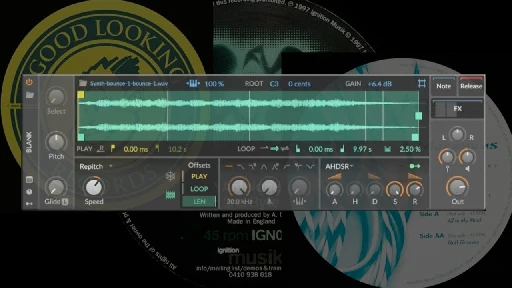
YouTube Video
Click to view this content.
If you’ve listened to some 90s and early 00s ambient-oriented tracks and tried to recreate their sounds with just a synth, you’ll notice that downsampling and bitcrushing won’t get you the same kind of sound you hear in there. It will sound dull(er) and less… complete, lush, rich? That is because back in the day artists sampled their synths and the technical side of that process had some cool side effects.
You can sample in two different ways. You can sample whole chords, where your parallel harmonies and frequency stretching will combine into a weird but cool sound. Or, on the topic of this video, you can sample an individual note from a synth and have your frequency stretching happen with different magnitudes for every note of the chord. That will create an interesting and rich sound!
This Thought-Forms video will show you an exact how-to with some tips on how to develop that sampler sound once you get the basics. It’s quick, concise and really informative.
I hope you find this technique useful. AMN out!
cross-posted from: https://waveform.social/post/273815
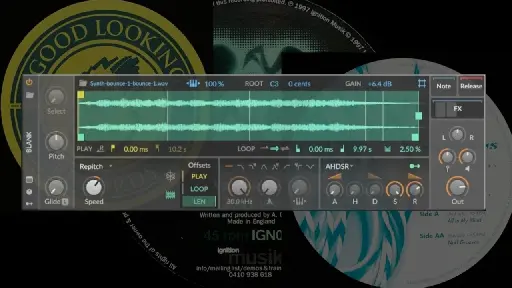
YouTube Video
Click to view this content.
If you’ve listened to some 90s and early 00s ambient-oriented tracks and tried to recreate their sounds with just a synth, you’ll notice that downsampling and bitcrushing won’t get you the same kind of sound you hear in there. It will sound dull(er) and less… complete, lush, rich? That is because back in the day artists sampled their synths and the technical side of that process had some cool side effects.
You can sample in two different ways. You can sample whole chords, where your parallel harmonies and frequency stretching will combine into a weird but cool sound. Or, on the topic of this video, you can sample an individual note from a synth and have your frequency stretching happen with different magnitudes for every note of the chord. That will create an interesting and rich sound!
This Thought-Forms video will show you an exact how-to with some tips on how to develop that sampler sound once you get the basics. It’s quick, concise and really informative.
I hope you find this technique useful. AMN out!

YouTube Video
Click to view this content.
If you've listened to some 90s and early 00s ambient-oriented tracks and tried to recreate their sounds with just a synth, you'll notice that downsampling and bitcrushing won't get you the same kind of sound you hear in there. It will sound dull(er) and less... complete, lush, rich? That is because back in the day artists sampled their synths and the technical side of that process had some cool side effects.
You can sample in two different ways. You can sample whole chords, where your parallel harmonies and frequency stretching will combine into a weird but cool sound. Or, on the topic of this video, you can sample an individual note from a synth and have your frequency stretching happen with different magnitudes for every note of the chord. That will create an interesting and rich sound!
This Thought-Forms video will show you an exact how-to with some tips on how to develop that sampler sound once you get the basics. It's quick, concise and really informative.
I hope you find this technique useful. AMN out!
I'd argue the speed reduction to your workflow from having to manage multiple overlapping windows is a significant drawback and there is nothing that stops free software from embedding other projects as a dependency with some user discretion. Unless you don't have to manage the windows because of how much screen space you have or because of how those plugins work around that, I'd say having all essential stuff in one place (window) is better. I worked in FL for a long time and I'm not sure if it gets better in other DAWs. Trying out new stuff soon though


There are a lot of great stereo imaging tools and spectrum analyzers. Most of them aren't free though. Having a good way to visually analyze loudness, frequency distribution and stereo image is incredibly important. Unfortunately, it is often the case that most default or free solutions are barely functional. They don't provide you with enough information to shape your mix or don't present it in a simple, clear and understandable format. (I'm looking at you, FL studio visualizers!)
SPAN is a spectrum analysis tool that will let you monitor your peak volume, RMS and LUFS. It shows you the frequencies that are passing through the plugin and you can customize the spectrum view by changing time, frequency and level ranges. If you want even more precision and control, you can adjust the fast fourier transform sample size, it gets that technical! You can also compare channels, left and right of the same channel or two different ones. Two channel comparison is the limit of the free version, SPAN Plus allows you to display as many channels as your DAW will allow. It also features a correlation meter that measures your phase alignment (1=fully aligned and -1=completely misaligned). It can also track your loudness stats thoughout the playtime to iron out any kinks. Handy, functional and no-nonsense tool.
MSED is a stereo analysis and encoding tool. It can help you manange your side and mid channels: your stereo image. It comes with a basic set of tools that allows you to pan, change levels, swap left-right channels and flip phase 180 degrees. The visualizers are pretty simple, you have your correlation meter from before, stereo pan meter and plasma-style vector scope. You might think you don't need it if you DAW provides stereo imaging functions of its own, but often times you're going to be playing guessing games in terms of how that audio will actually get processed: some DAWS merge your stereo tracks to mono, some don't. MSED takes care of that ambiguity and puts all of the necessary tools and monitoring in one spot.
These plugins are available in VST, VST3, AU and AAX for free! I really can't recommend them enough if you're starting out producing or are in need of simple tools that won't take a toll on your CPU with fancy advanced processing.
SPAN Product page: https://www.voxengo.com/product/span/
MSED Product page: https://www.voxengo.com/product/msed/
cross-posted from: https://waveform.social/post/241390


There are a lot of great stereo imaging tools and spectrum analyzers. Most of them aren't free though. Having a good way to visually analyze loudness, frequency distribution and stereo image is incredibly important. Unfortunately, it is often the case that most default or free solutions are barely functional. They don't provide you with enough information to shape your mix or don't present it in a simple, clear and understandable format. (I'm looking at you, FL studio visualizers!)
SPAN is a spectrum analysis tool that will let you monitor your peak volume, RMS and LUFS. It shows you the frequencies that are passing through the plugin and you can customize the spectrum view by changing time, frequency and level ranges. If you want even more precision and control, you can adjust the fast fourier transform sample size, it gets that technical! You can also compare channels, left and right of the same channel or two different ones. Two channel comparison is the limit of the free version, SPAN Plus allows you to display as many channels as your DAW will allow. It also features a correlation meter that measures your phase alignment (1=fully aligned and -1=completely misaligned). It can also track your loudness stats thoughout the playtime to iron out any kinks. Handy, functional and no-nonsense tool.
MSED is a stereo analysis and encoding tool. It can help you manange your side and mid channels: your stereo image. It comes with a basic set of tools that allows you to pan, change levels, swap left-right channels and flip phase 180 degrees. The visualizers are pretty simple, you have your correlation meter from before, stereo pan meter and plasma-style vector scope. You might think you don't need it if you DAW provides stereo imaging functions of its own, but often times you're going to be playing guessing games in terms of how that audio will actually get processed: some DAWS merge your stereo tracks to mono, some don't. MSED takes care of that ambiguity and puts all of the necessary tools and monitoring in one spot.
These plugins are available in VST, VST3, AU and AAX for free! I really can't recommend them enough if you're starting out producing or are in need of simple tools that won't take a toll on your CPU with fancy advanced processing.
SPAN Product page: https://www.voxengo.com/product/span/
MSED Product page: https://www.voxengo.com/product/msed/


There are a lot of great stereo imaging tools and spectrum analyzers. Most of them aren't free though. Having a good way to visually analyze loudness, frequency distribution and stereo image is incredibly important. Unfortunately, it is often the case that most default or free solutions are barely functional. They don't provide you with enough information to shape your mix or don't present it in a simple, clear and understandable format. (I'm looking at you, FL studio visualizers!)
SPAN is a spectrum analysis tool that will let you monitor your peak volume, RMS and LUFS. It shows you the frequencies that are passing through the plugin and you can customize the spectrum view by changing time, frequency and level ranges. If you want even more precision and control, you can adjust the fast fourier transform sample size, it gets that technical! You can also compare channels, left and right of the same channel or two different ones. Two channel comparison is the limit of the free version, SPAN Plus allows you to display as many channels as your DAW will allow. It also features a correlation meter that measures your phase alignment (1=fully aligned and -1=completely misaligned). It can also track your loudness stats thoughout the playtime to iron out any kinks. Handy, functional and no-nonsense tool.
MSED is a stereo analysis and encoding tool. It can help you manange your side and mid channels: your stereo image. It comes with a basic set of tools that allows you to pan, change levels, swap left-right channels and flip phase 180 degrees. The visualizers are pretty simple, you have your correlation meter from before, stereo pan meter and plasma-style vector scope. You might think you don't need it if you DAW provides stereo imaging functions of its own, but often times you're going to be playing guessing games in terms of how that audio will actually get processed: some DAWS merge your stereo tracks to mono, some don't. MSED takes care of that ambiguity and puts all of the necessary tools and monitoring in one spot.
These plugins are available in VST, VST3, AU and AAX for free! I really can't recommend them enough if you're starting out producing or are in need of simple tools that won't take a toll on your CPU with fancy advanced processing.
SPAN Product page: https://www.voxengo.com/product/span/
MSED Product page: https://www.voxengo.com/product/msed/
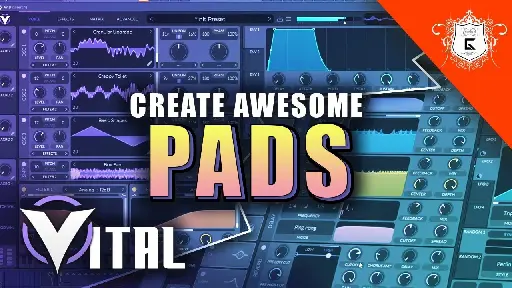
YouTube Video
Click to view this content.
Spoiler: Status update!!!
Sorry lads! Must've missed the cross-post a couple of days ago! Slow rate of content due to my new job, still trying to figure out how to best duplicate other users' submissions on waveform for this instance and vice versa, community post on that issue incoming soon. Hold tight!
.
Making a great sounding pad is actually more tricky than getting some cool synth and drowning it in tons of reverb. I know I tried that the first time. And failed miserably. You don't have to!
Will is gonna walk us through different tricks and ideas to flesh out an ambient pad. Using a root tone, texture tones for highs and lows, some effects and simple automations will allow you to create a cool and easily customizeable(!) pad from scratch with any and all wavetables that you want in there!
Hope you find it useful, guys! AMN out!
I used to have a friend back in middle school who was getting a music education at the time. That was right around the point when I just started producing and he mentioned that my music sounded like it was from a videogame. And well I kinda took that to heart and looked up a bunch of itch.io games. I found a cool project and they were just in need of a soundtrack, so I said "let me give it a go". They liked my drafts and the rest is history. I've learned so much since then. Working on the game for the past couple of years boosted my skills into something release worthy. I even rewrote the whole thing twice because the skill gap was so massive between the first and the last track in the playlist. This last rewrite is gonna be final, and gonna become my portfolio in case I want to hit another studio after this. Hope it works out!
Just wanted to write out this post to the waveform community and say my thanks to everyone who's been participating and lurking in this community so far. It's amazing to see your posts and projects here every day and it genuinely makes my day a little brighter to know that something I posted helped someone on the other side of the screen!
Anyways, I'd like to ask you all to help me bring you better content. I can't really post Kush, In The Mix, or random youtubers everyday, I find a lot of channels don't go nearly in-depth enough on a lot of topics and just scratch the surface, and well established youtubers just post the same content and advice over and over again. We should all benefit from different perspectives here!
I got a new job (yay!) earlier this week, so I'm gonna be a bit short on free time, which means if I don't do something about the way I search for content it'll be hard to make it consistently.
Finding noteworthy youtube channels can be quite time consuming. Writing a quality post also takes time: watching, researching, writing, reviewing, all that sha-bang! Takes me on average about 2-3 hours to do all of that. I might have ADHD or some form of inattention so that might explain if those hours seem like a bit too much.
So I thought we'd pool some interesting channels and websites in this thread, that way it'll be easy to reference for newcomers and I'll be able to curate the best content in here. It will also be interesting to know what your guys knowledge levels are and what areas of production you find most difficult: mixing, mastering, sound design, songwriting, etc. It will help me curate the content better as right now I really have very little idea about all that. And also, your likes in terms of genres and artists would be cool to share in the community. Let's see what kind of music we like to make!
Here are the discussion questions in a nice order. You don't have to answer every single question and it's completely okay to answer just one! All of these have full potential to be a really interesting standalone comment!
- Tell us about yourself! How long have you been making music and how much time do you spend producing a week (roughly)? What made you start your journey?
- What are your favorite genres to make and/or listen to? What unites them or makes them different to you?
- What are your most favorite artists? What makes them great to you?
- What resources (websites and youtube channels) do you use for learning? How do they help you?
I'll start with myself in the comments to this post!
I like the idea! I think the instruments feel a bit too clean on this one though. I'd add some more reverb and reduce the sample rate on drums especially, but also on the synths slightly. Soft bit crushing may apply here too. I would also add an ambient pad - it would fill out the empty space in the song while still keeping it minimal. Levels may need some work. As for the rest, the track works quite well compositionally, the idea is solid and it fits the lo-fi style quite nicely without being boring or bland. Looking forward to your next work!

YouTube Video
Click to view this content.
Dubstep growls may sound like they’re simple, but getting a good growl sound is way more than just distorting some waves to all hell (though it may be a part of it). Using your envelopes and LFOs to shape the sound through filters, distortion and other effects will get quite a bit more complicated.
Noah will show us how to get a high quality, clean and powerful dubstep growl in the style of Virtual Riot, so you can put those skills and ideas to use in your own synth patches.
cross-posted from: https://waveform.social/post/154053
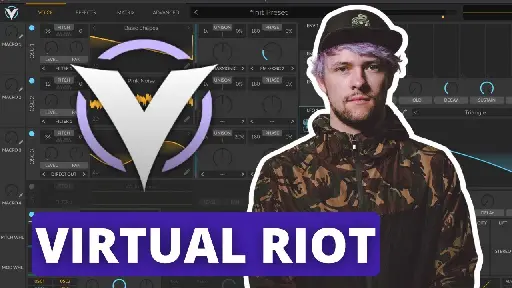
YouTube Video
Click to view this content.
Dubstep growls may sound like they’re simple, but getting a good growl sound is way more than just distorting some waves to all hell (though it may be a part of it). Using your envelopes and LFOs to shape the sound through filters, distortion and other effects will get quite a bit more complicated.
Noah will show us how to get a high quality, clean and powerful dubstep growl in the style of Virtual Riot, so you can put those skills and ideas to use in your own synth patches.
P.S: My posts will slow down from here on out as I have a bit more going on IRL than I did when I started. This one today is a quickie in between my schedule, but bigger posts will still keep coming and I hope you find it interesting nevertheless!

YouTube Video
Click to view this content.
Dubstep growls may sound like they're simple, but getting a good growl sound is way more than just distorting some waves to all hell (though it may be a part of it). Using your envelopes and LFOs to shape the sound through filters, distortion and other effects will get quite a bit more complicated.
Noah will show us how to get a high quality, clean and powerful dubstep growl in the style of Virtual Riot, so you can put those skills and ideas to use in your own synth patches.
P.S: My posts will slow down from here on out as I have a bit more going on IRL than I did when I started. This one today is a quickie in between my schedule, but bigger posts will still keep coming and I hope you find it interesting nevertheless!
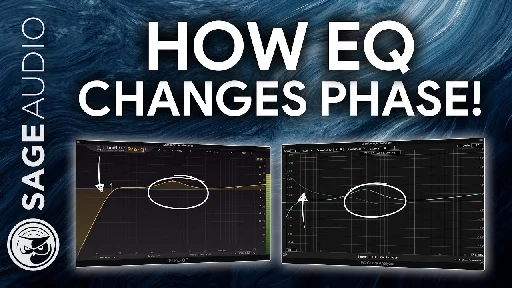
YouTube Video
Click to view this content.
EQ is a really simple tool, but the way it works is anything but that. Different equalizers use different algorithms to process your audio, and most of them will affect your sound in unexpected ways.
The video will give you an overview on some technical reasons why phase weirdness happens with most EQs and also how an asymmetric EQ setup can give you unexpected Haas effects.
And man, does Sage Audio’s video feature some sick beats!
cross-posted from: https://waveform.social/post/136498
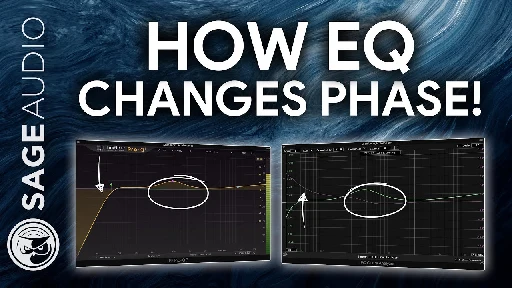
YouTube Video
Click to view this content.
EQ is a really simple tool, but the way it works is anything but that. Different equalizers use different algorithms to process your audio, and most of them will affect your sound in unexpected ways.
The video will give you an overview on some technical reasons why phase weirdness happens with most EQs and also how an asymmetric EQ setup can give you unexpected Haas effects.
And man, does Sage Audio's video feature some sick beats!

YouTube Video
Click to view this content.
EQ is a really simple tool, but the way it works is anything but that. Different equalizers use different algorithms to process your audio, and most of them will affect your sound in unexpected ways.
The video will give you an overview on some technical reasons why phase weirdness happens with most EQs and also how an asymmetric EQ setup can give you unexpected Haas effects.
And man, does Sage Audio's video feature some sick beats!
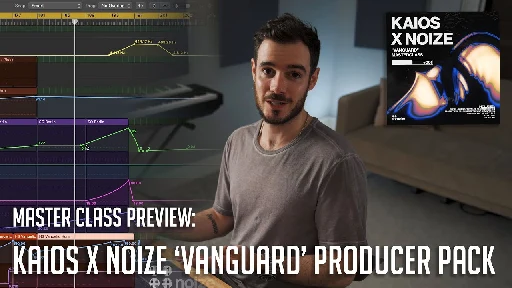
YouTube Video
Click to view this content.
I was looking for some good videos on automation and it surprised me that there’s not a lot of content relating to the decision making process, despite automation being a standard feature in any modern production software.
Automation is an important tool in any music producers kit and learning how to use it well is just as important as arranging your tracks, if not slightly more so for electronic tracks. One could say that in electronic music it is a part of arranging.
There are a lot of fun ways to automate your productions, like creating macro effects for your synths to use as buildups or additional texture. Today though, we’ll take a look at how Fabio from Noize London approaches making transitions, building and releasing tension, and working with emotion through gain automation.
cross-posted from: https://waveform.social/post/129146
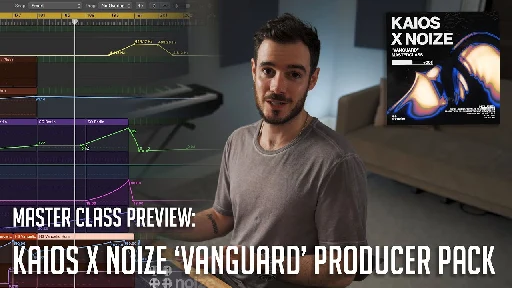
YouTube Video
Click to view this content.
I was looking for some good videos on automation and it surprised me that there’s not a lot of content relating to the decision making process, despite automation being a standard feature in any modern production software.
Automation is an important tool in any music producers kit and learning how to use it well is just as important as arranging your tracks, if not slightly more so for electronic tracks. One could say that in electronic music it is a part of arranging.
There are a lot of fun ways to automate your productions, like creating macro effects for your synths to use as buildups or additional texture. Today though, we’ll take a look at how Fabio from Noize London approaches making transitions, building and releasing tension, and working with emotion through gain automation.

YouTube Video
Click to view this content.
I was looking for some good videos on automation and it surprised me that there's not a lot of content relating to the decision making process, despite automation being a standard feature in any modern production software.
Automation is an important tool in any music producers kit and learning how to use it well is just as important as arranging your tracks, if not slightly more so for electronic tracks. One could say that in electronic music it is a part of arranging.
There are a lot of fun ways to automate your productions, like creating macro effects for your synths to use as buildups or additional texture. Today though, we'll take a look at how Fabio from Noize London approaches making transitions, building and releasing tension, and working with emotion through gain automation.


As you might've noticed if you visited our community page after this post, I made a very cool looking banner (or so my mum tells me). Thing is, I don't use that many plugins on my own, and what better way to make the banner look interesting than to put your favorite plugins in there? This page will also serve as a cool overview of different plugins our community uses, so be sure to post all of your favorites! I'll pick the coolest-looking ones for the banner!
This post is gonna stay up until I decide that the banner is done (and perhaps we'll make it a seasonal thing to swap it out, who knows?) I'll update this banner in my spare time when you guys post some things to add.
To get on the banner, comment the name of a plugin and the company or a name of the person who made it. You can also post a link to its page or your own screenshot of the plugin, if you want.
I don't know what the limit is to how many plugins I can put in the image, but we should have a lot of space (and we're not limited to the amount of spots currently on the list). I suppose as long as every individual plugin is recognizable when shrinked, we're all good!
Right now the banner features:
(in order: columns from left to right )
- Pro-Q 3 by Fabfilter posted by many
- SPAN by Voxengo
- MSED by Voxengo
- Sforzando by Plogue
- Vital by Vital Audio
- Decapitator by Soundtoys posted by u/michaelfone@vlemmy.net
- 1176 Collection by Universal Audio posted for being a classic
- Pigments by Arturia posted by u/DASEIN
- Saturn by Fabfilter posted by u/michaelfone@vlemmy.net
- Zener-Bender by Softube Chandler posted by u/ebauche
- Aalto by Madrona Labs posted by u/DASEIN
- XO by XLN Audio posted by u/michaelfone@vlemmy.net
- 2500 Bus Compressor by Api posted by u/michaelfone@vlemmy.net
- Comper by Analog Obsession posted by u/goosehorse
- Surge XT by Surge Synth Team posted by u/mokpo@lemm.ee
- Sausage Fattener by Dada Life posted by chaos incarnate
- Replika XT by Native Instruments posted by u/ebauche
- Permut8 by Sonic Charge posted by u/DASEIN
- Omnisphere by Spectrasonics posted by u/Shadowbait
- Shaperbox by Cableguys posted by u/michaelfone@vlemmy.net
- Nova Dynamic EQ by Tokyo Dawn Records posted by u/goosehorse
- Super VHS by Baby Audio posted by u/Shadowbait
- PaulStretch by Sonasaurus posted by u/mokpo@lemm.ee
- EQ232D by Bettermaker posted by u/DASEIN
- "Space Echo" Delay Tape-201 by Arturia posted by u/michaelfone@vlemmy.net
- Supermassive by Valhalla posted by u/mokpo@lemm.ee
- Gullfoss by Soundtheory posted by u/Shadowbait
- Raum by Native Instruments posted by u/Shadowbait
- Deelay by Sixth Sample posted by u/mokpo@lemm.ee
I'll swap out the placeholders for your submissions and credit you! Like this:
Stuff by Cool People posted by u/supercoolperson
And that's about it. Sh.itjust.works and waveform.social will have different banners (in the same style), so we can do something different with both of them! Post away!
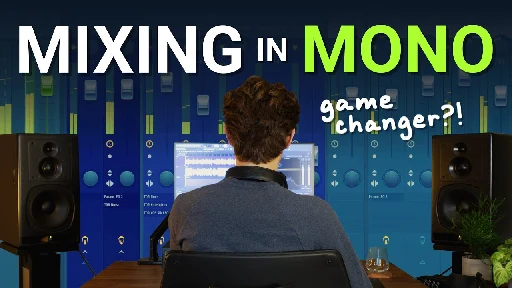
YouTube Video
Click to view this content.
Mixing in mono is one of those production "tricks" that have solidified in my mixing routine to achieve clearer mixes. It's a really easy shortcut to hearing levels and even frequencies of everything in your track without the distraction of stereo imaging. It also helps to figure out phase issues between closely tuned kicks and bass and correct your synth sound design too!
But sometimes the immediate benefit it gives us gets outweighed by a longterm one of improving your critical hearing skills. For example, if you use mono to hear frequency fighting between instruments, you're undercutting your learning experience of properly working with frequencies in stereo. After all, it's not uncommon to pan different instruments asymmetrically. Having stereo means you have two different signals that should be shaped on their own terms.
Michael is going to walk us through some of the things that mixing in mono can be used for and give some perspective on how those particular uses stack up in a more robust or specific production workflow. And, I hope this knowledge helps you in your own productions!
cross-posted from: https://sh.itjust.works/post/742906
The alternative squares do exactly that, and the effects become way more obvious with distortion. Ultimately, changing phases on the same frequencies you need to build a square changes the volume due to phase cancellation and introduces some micro-changes to the sound which is what impacts the way the sound interacts with processing (distortion, compression, all that).
Also, using less frequencies to build a square overall will produce a softer and nicer square sound. Modern software really pushes it when building a proper square by adding a ton of high frequency sines to make it "textbook square" (something that wasn't done in older hardware due to limitations). That sharpness can be easily removed to get essentially a square that doesn't cut into your ears. Something to keep in mind if you feel the need to lowpass your squares later in the chain.
Hey man, I only know about distortion in old hardware from documentaries, it surprised me too when it produced the sound straight out of a console! I just tried one patch, but there is probably more you can do with triangles and perhaps some FM-synthesis, that's something to feel excited about!
Insane! That's getting added to my mental list of "things I didn't know I needed to know, that I now know", lol
Also, someone in the comments pointed out, the wave will interact differently with distortion and also sound differently in lower octaves. I just toyed around with it in Vital, and you can get some pretty old-school sounding imperfect square waves by randomly phaseshifting different frequencies and passing them through a clipping distortion to get back the volume. Sounds like something straight out of Atari and NES sound chips, cause I suppose the sound chips themselves on console or/and on the tv produced a ton of distortion. Playing several notes close together or in a chord and pitch shifting is completely wild, though perhaps everything I just outlined isn't a surprise to any chiptune veterans out there.
My other account: anthromusicnote@sh.itjust.works
I'm a music production hobbyist! I write Metal, DnB and Video Game Soundtracks!